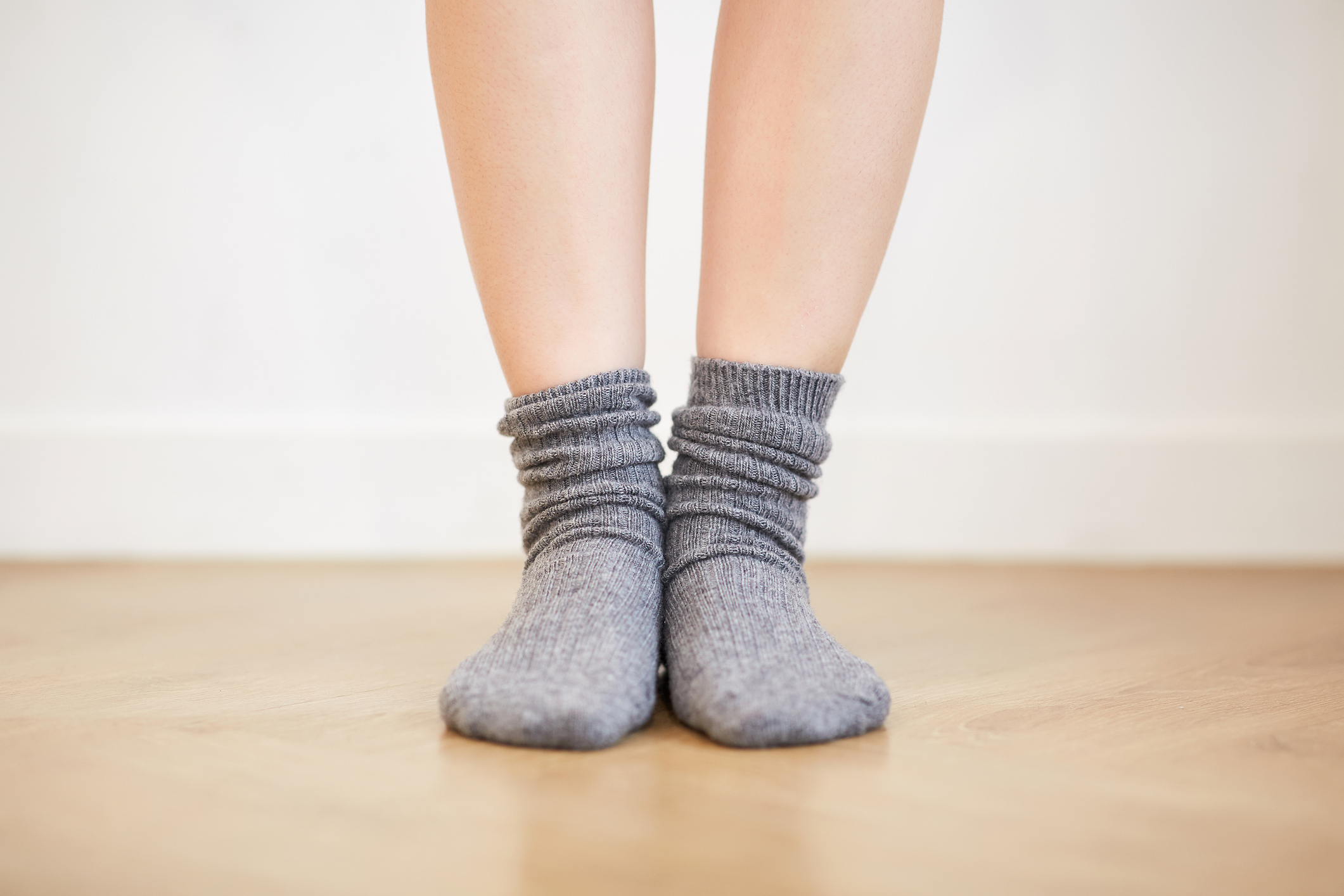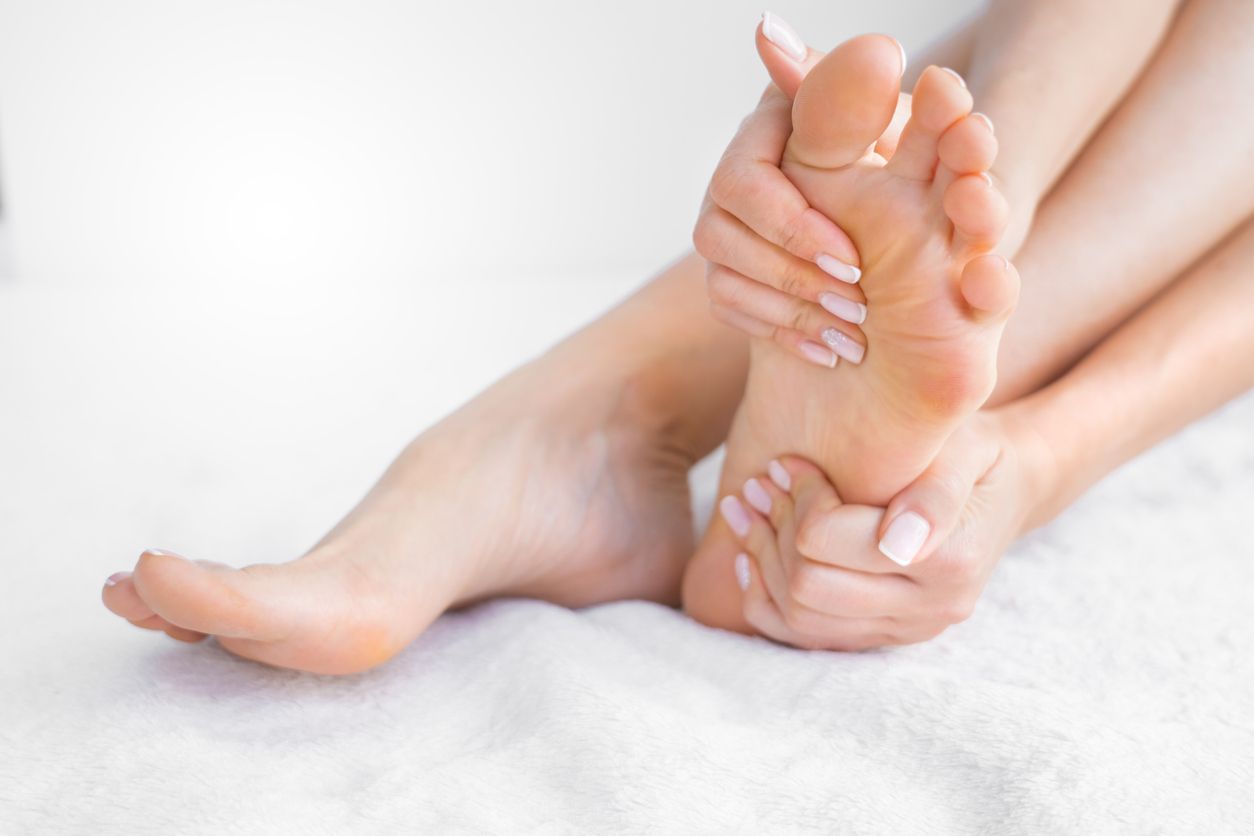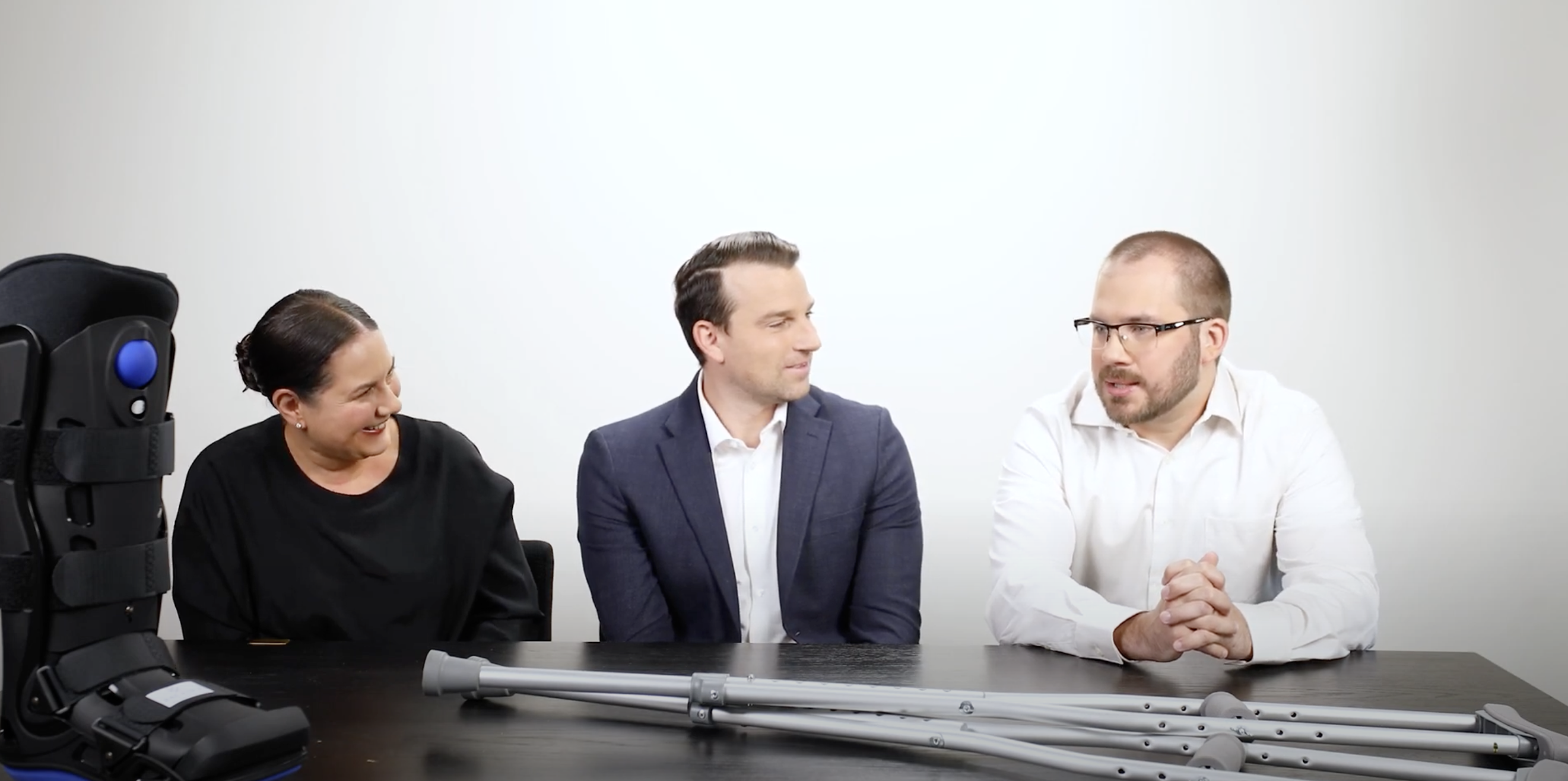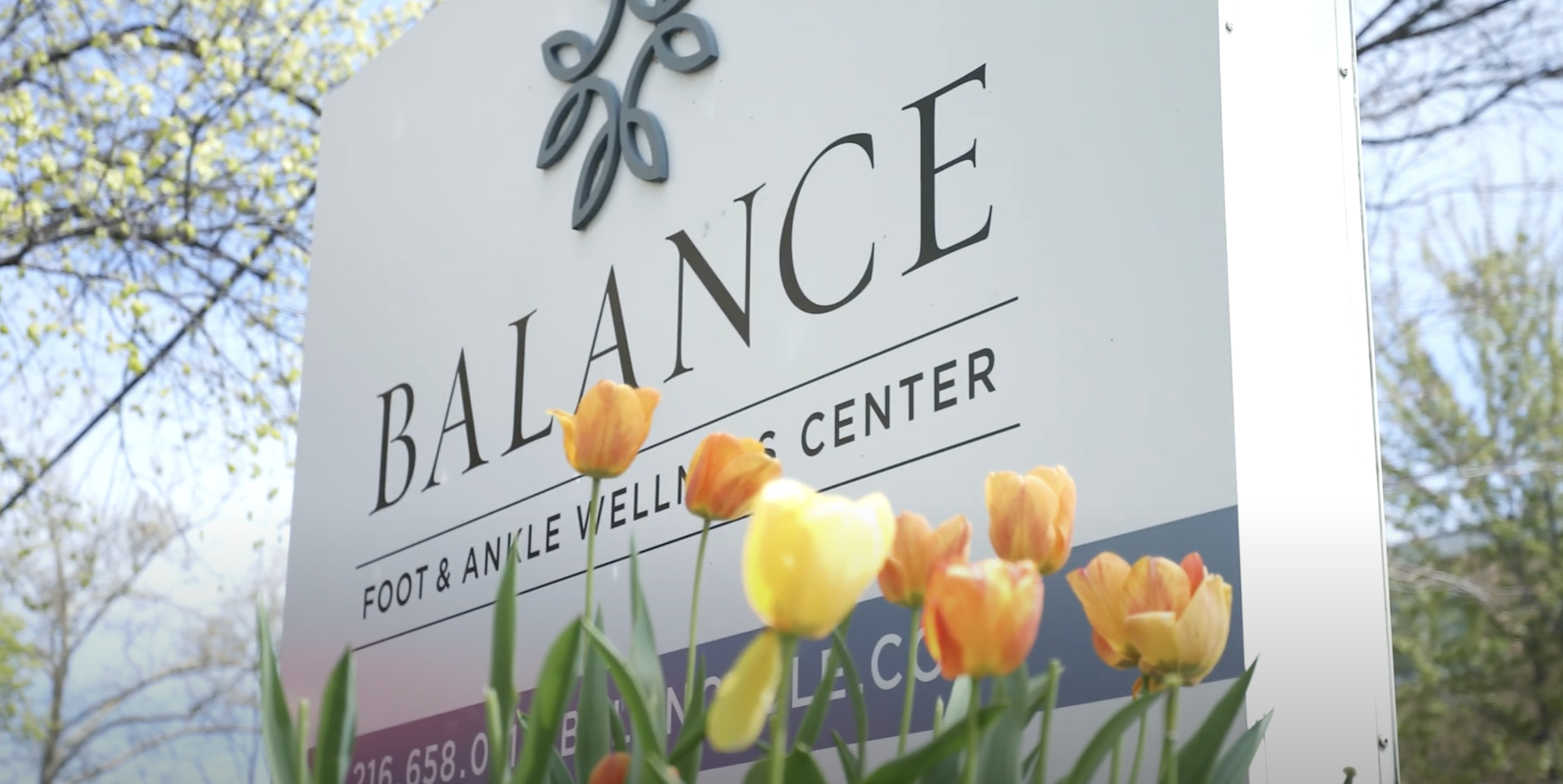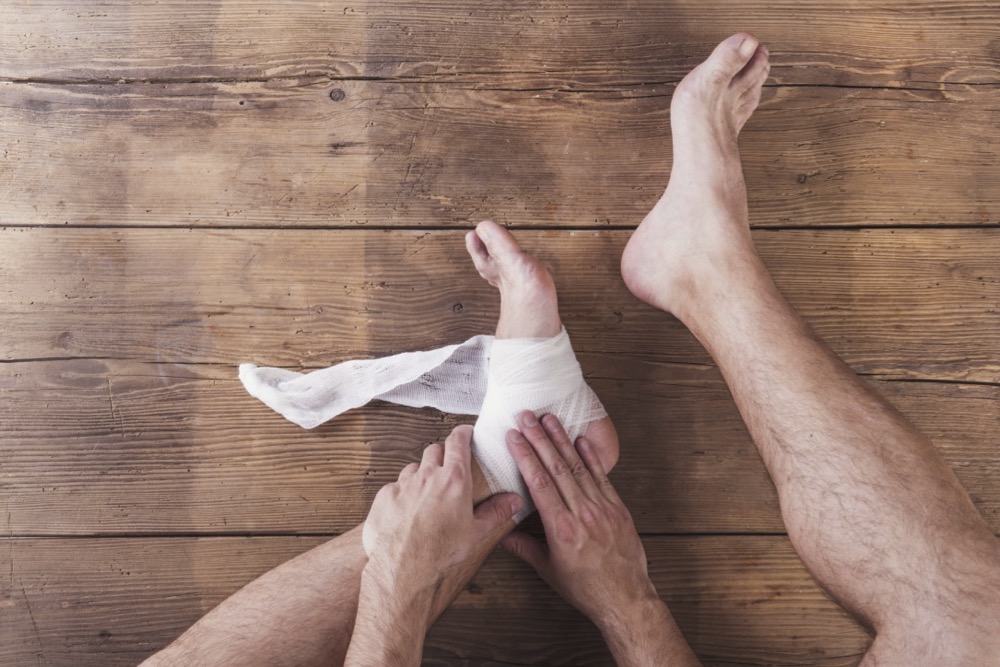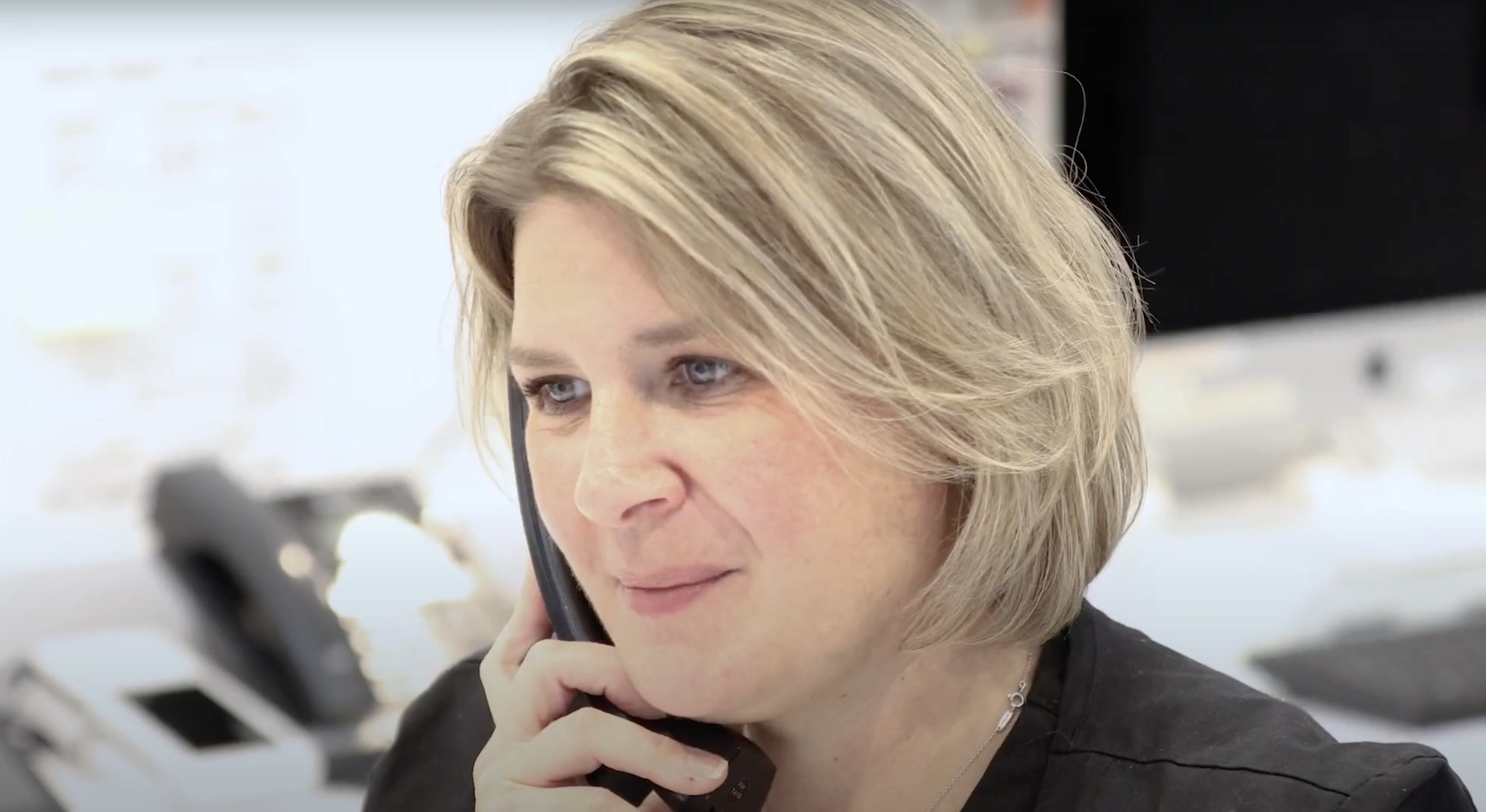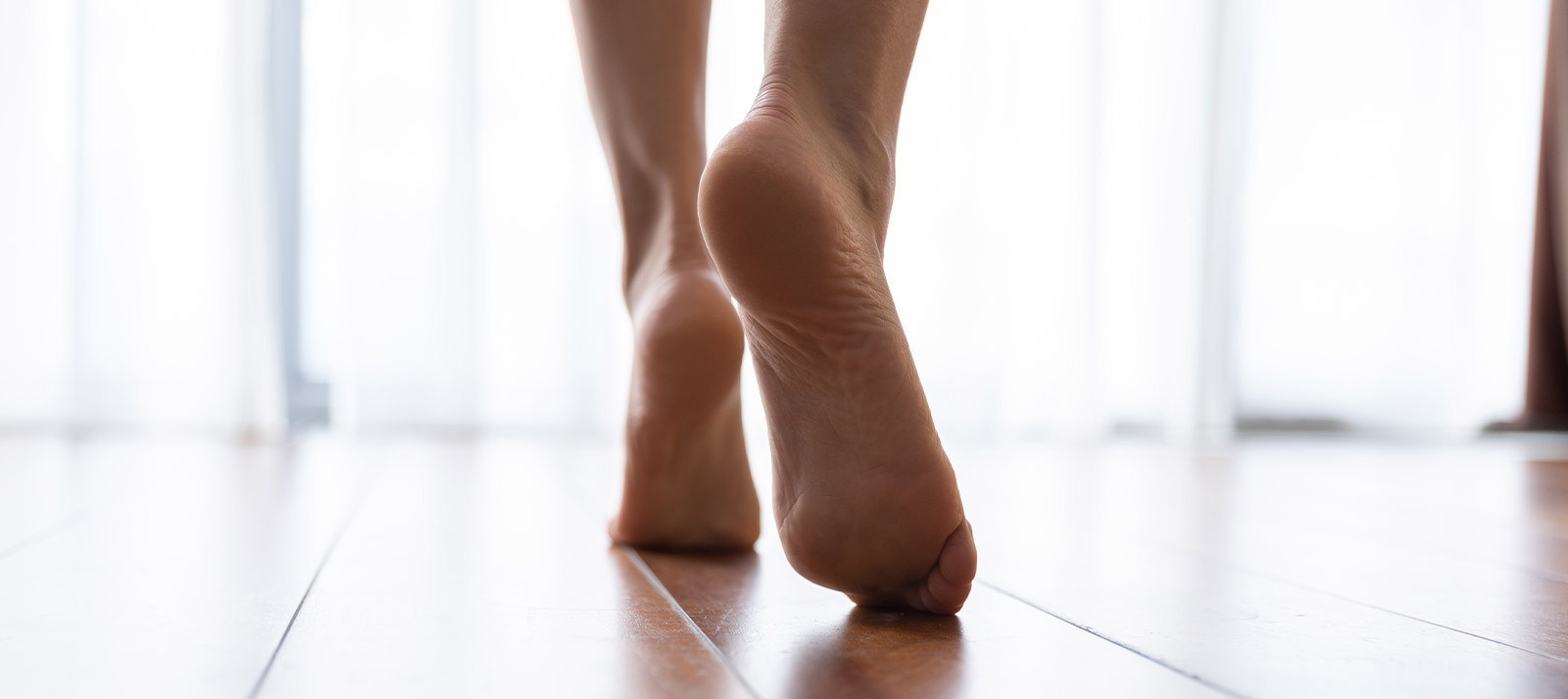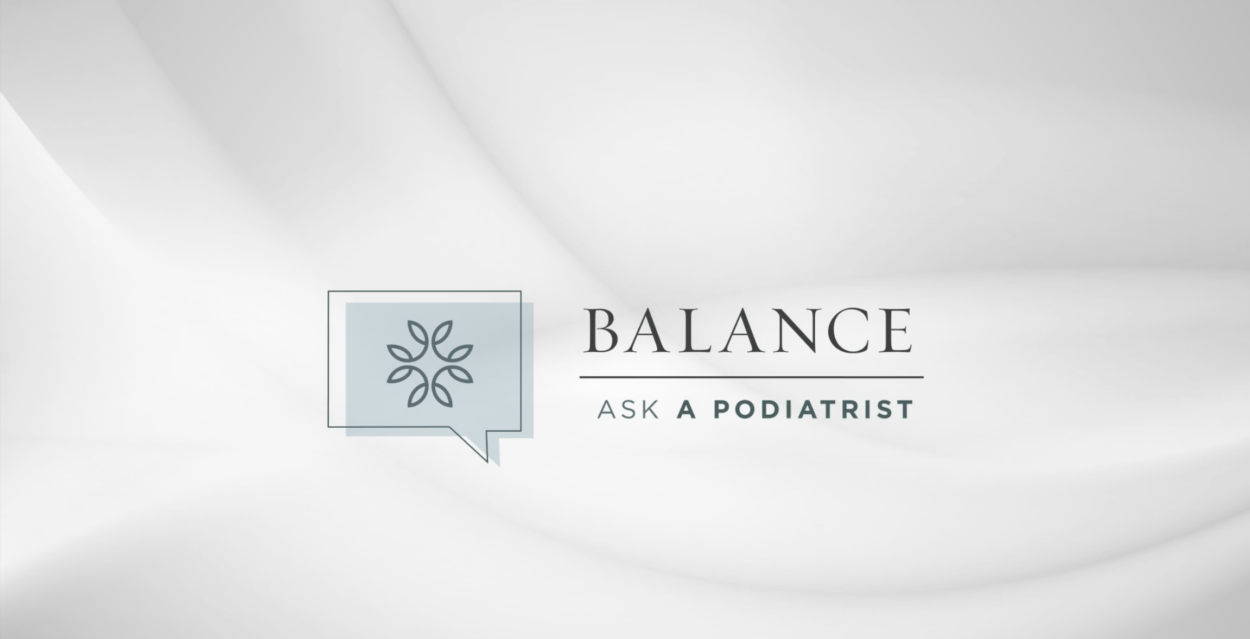The Foundation of Wellness: How Foot Health Contributes to Your Whole Body
The Foundation of Wellness: How Foot Health Contributes to Your Whole Body
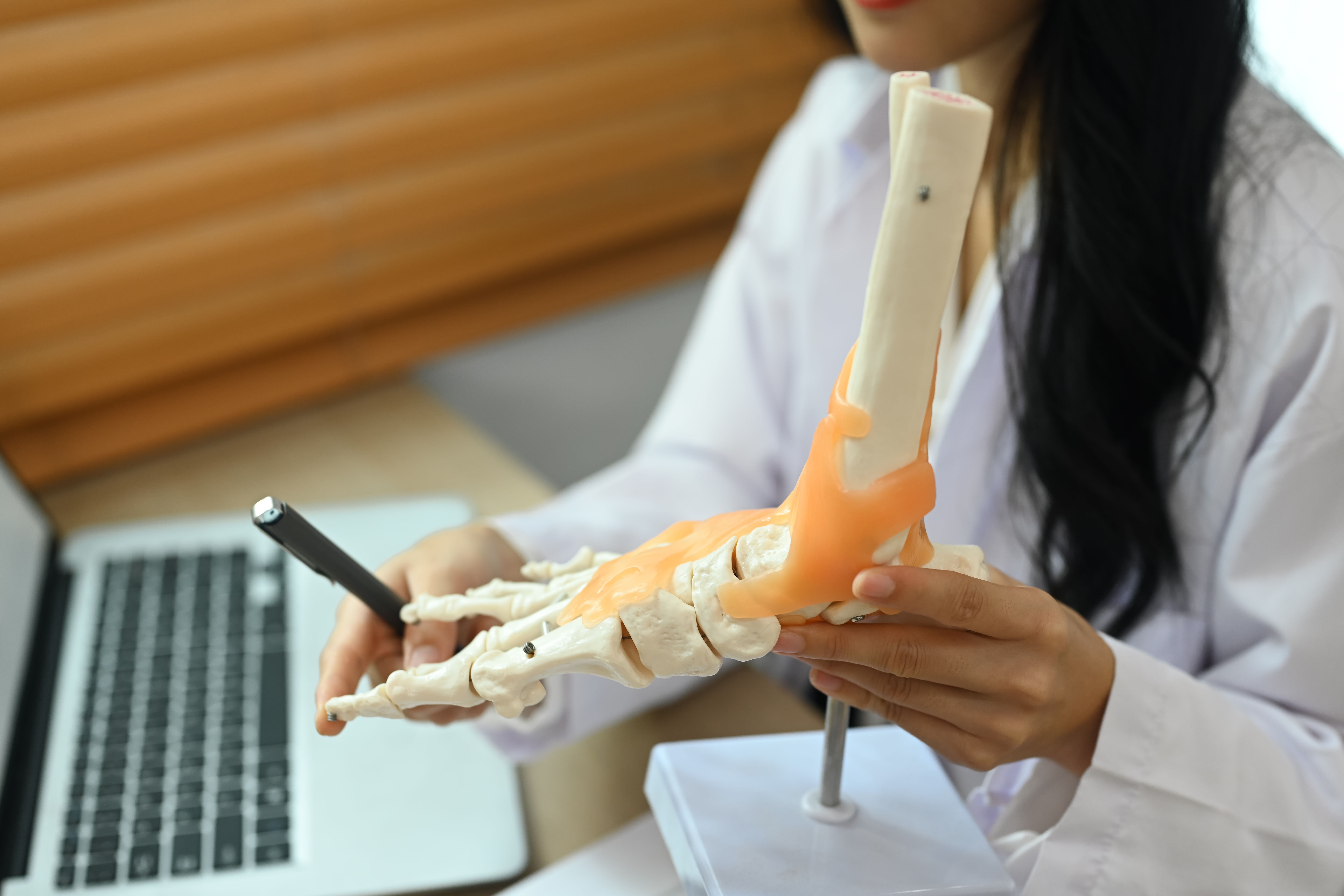
Your feet do more than get you from here to there. They are the foundation of your entire body, providing support, balance, and mobility every single day. Despite this critical role, foot health is often overlooked until discomfort or pain starts to affect other areas. Understanding the impact your foot and ankle have on your gait and how faulty mechanics may result in pain, dysfunction, injury, or instability in the feet, ankles, knees, hips, or back is essential to maintaining total-body wellness.
Foot care is not just about avoiding blisters or sore arches. When your feet are healthy and functioning properly, they help maintain proper alignment and reduce strain on your joints and muscles. Proper mechanical optimization ultimately results in a better functioning foot, ankle, and leg by maintaining more normal angular relationships in the lower extremity. When they are not, it can impact your shins, your knees and all the way up your body to the neck.
Understanding how foot health contributes to total-body wellness is the first step toward preventing injury and improving your quality of life. Proactive foot and ankle wellness can eliminate pain, prevent or delay the progression of chronic conditions and the need for surgical intervention, and help you lead a more comfortable lifestyle.
Different Types of Pain that Poor Foot Health Can Lead to:
In the case of a foot injury, your body is already trying to do the leg work of compensating. This means other muscles or joints begin working harder than they should, leading to strain and misalignment.
Here are a few examples of how foot problems can show up elsewhere in the body:
Knee Pain
Conditions like overpronation, where the foot rolls inward too much, can affect the alignment of your knees. This extra stress can lead to pain, instability, or injury over time.
Lower Back Pain
Foot-related postural changes can travel up the kinetic chain and affect spinal alignment. Flat feet or uneven weight distribution may cause the pelvis to tilt, resulting in strain and discomfort in the lower back.
Neck and Shoulder Tension
Although it may seem unrelated, chronic alignment issues in the feet can reach the upper body over time. Misalignment over time can cause subtle shifts in posture, which can contribute to tightness in the shoulders and neck.
Foot Health and Chronic Conditions
Foot health also plays a major role in managing several chronic medical conditions. Here’s how:
Diabetes
People with diabetes are more prone to foot ulcers, infections, and nerve damage due to poor circulation and neuropathy. Regular foot exams are essential for preventing serious complications.
Arthritis
Degenerative joint conditions often start in the feet. Pain and stiffness in the ankles or toes can make walking difficult and worsen joint stress elsewhere in the body.
Obesity
Carrying excess weight increases pressure on the feet, which can lead to conditions like plantar fasciitis, heel spurs, and joint pain. When foot pain makes movement difficult, it can limit physical activity, which in turn affects weight management and overall health.This creates a cycle where total body pain is perpetuated and becomes harder to remedy over time..
When to see a Balance Foot & Ankle Podiatrist
Not all foot pain is temporary. In fact, it is often the first sign that something in your body is out of balance. You should consider seeing a podiatrist if you experience:
- Ongoing foot or ankle pain
- Numbness, swelling, or changes in foot shape
- Difficulty walking or standing for long periods
- A chronic condition like diabetes, arthritis, or obesity
- Acute injuries including sprains, strain, or fractures of the foot or ankle
Early diagnosis and treatment can help prevent minor issues from becoming major ones. For people managing chronic conditions, routine foot care is a key part of maintaining overall health and independence.
Your feet do more than carry you. They support your entire body. When they’re out of alignment, everything from your knees to your back can suffer. Don’t wait for small foot issues to turn into full-body problems. Schedule your appointment today with the experts at Balance Foot & Ankle and take the first step toward total-body wellness.
Sun’s out, shoes off! How to protect your bare feet this Summer
Sun’s out, shoes off! How to protect your bare feet this Summer

The Appeal of Going Barefoot
There’s something undeniably freeing about kicking off your shoes and feeling the ground beneath your feet, especially in the summertime.
From beach days and backyard barbecues to poolside lounging and walks through the park, summer invites us to spend more time barefoot. And in certain situations, that can actually be good for your feet. Going barefoot can help strengthen the muscles in your feet and ankles, improve balance and coordination, and increase body awareness.
During the summer, barefoot time often increases naturally. From beach days and pool parties to backyard games and lounging around the house, it’s easy to spend more time without shoes. But before you do, it’s important to understand what your feet are being exposed to.
While barefoot time can be refreshing and even beneficial, it also comes with some risks depending on where you’re walking. At Balance Foot & Ankle, we believe in helping you make informed, confident choices for your foot health. So before you go shoeless this season, here’s what you need to know about the surfaces beneath your feet and how to keep them protected.
Common Summer Surfaces and How They Impact Your Feet
- Beach Days: Battling Sand
- Benefits: Sand offers a soft, uneven surface that encourages smaller stabilizing muscles in your feet and ankles to engage. Walking on it can act as a gentle workout and even exfoliate dry skin.
- Risks: Long beach walks can lead to overuse injuries like tendonitis, especially if you’re not used to barefoot activity. Hidden shells, sharp objects, or hot sand can also cause cuts or burns.
- Tip: Ease into beach walking gradually and bring a pair of flip flops or water shoes to protect your feet when needed.
- Parks & Yards: A Class in Grass
- Benefits: Grass is cool, soft, and gentle on the joints, making it a popular barefoot surface.
- Risks: Insect bites, hidden holes, and sharp sticks can all create issues if you’re not careful.
- Tip: Check the area before going barefoot and rinse your feet afterward to remove dirt and allergens.
- Pool Decks: Do’s and Dont’s Before the Dive
- Risks: Wet surfaces can be very slippery, leading to potential falls. Public pool areas also increase your chances of contracting conditions like plantar warts or athlete’s foot.
- Tip: Wear sandals or flip flops when walking around the pool, and dry your feet thoroughly when you’re done swimming.
- Pavement & Sidewalks: Concrete Tips
- Risks: Pavement can become extremely hot in the summer and may cause burns within seconds. It can also hide glass, nails, and other sharp debris.
- Tip: Test the ground with your hand before walking on it. If it’s too hot to touch, it’s too hot for bare feet.
- Indoors: House of Heel Pain
- Risks: Hard flooring without support can aggravate heel pain, plantar fasciitis, or other chronic foot conditions over time.
- Tip: If your feet get sore after walking barefoot indoors, try wearing soft, supportive slippers or cushioned house shoes.
When Barefoot Isn’t the Best Idea
Going barefoot isn’t safe or comfortable for everyone. If you have certain foot conditions, such as diabetes, neuropathy, or a healing wound, keeping your feet protected is critical to avoid injury or infection.
People with flat feet, high arches, or a history of chronic foot pain should also proceed with caution. If you notice discomfort or strain when walking barefoot, it’s a good idea to speak with your Balance Foot and Ankle Specialist.
Best Practices for Barefoot Time
If you’re planning to enjoy more barefoot time this season, here are a few tips to keep your feet healthy:
- Start with short periods of barefoot walking on safe, soft surfaces.
- Check your feet regularly for blisters, cuts, or signs of infection.
- Keep your skin moisturized, especially after walking on hot or dry surfaces.
- Trim your toenails regularly to prevent painful snags or breaks.
- Wear supportive footwear when needed to avoid fatigue or overuse injuries.
- Moisturize feet (especially after walking barefoot).
- Keep toenails trimmed and inspect feet regularly.
- Wear supportive sandals or shoes when needed.
Experiencing foot discomfort after going barefoot? Schedule your appointment with Balance Foot & Ankle today.!
From the Desk Of Lindsay Lupton
From the Desk of Lindsay Lupton, MSN, CNP, CWS
Acute vs Chronic Wounds
Wounds can be classified into two broad categories, acute and chronic, based on time to heal and cause of the wound. Medically, the term “acute” refers to a sudden onset of symptoms, illness or injury. Acute wounds most commonly occur because of surgery or trauma and heal in a timely, organized and predictable fashion. Conversely, chronic wounds are characterized by delayed healing and inability to progress through the expected, orderly healing trajectory.
Successful wound healing has four distinct phases: hemostasis, inflammation, proliferation and maturation, and takes two to four weeks. Hemostasis, the first phase, occurs immediately after wounding through blood vessel constriction and clot formation. This stage of healing lasts up to two days. The clot and wounded tissue release chemical messengers, signaling the migration of immune cells that clear bacteria and cellular debris. This is known as the inflammatory phase and lasts three to five days. These cells also initiate the tissue repair cascade which begins the proliferative phase. In this third stage of healing, various specialized cells promote new blood vessel growth, collagen synthesis and granulation tissue formation which develops into a provisional matrix of reparative dermis. This process is called re-epithelialization. The inflammatory and proliferative phases overlap and generally lasts five to fourteen days. In the final phase of healing, maturation, the newly generated epithelium matures and remodels to approach the architecture of the normal surrounding tissue. This process begins around fourteen days and can take up to two years to complete, depending on the degree of tissue destruction.
Although no exact designated timeframe exists, wounds persisting greater than six weeks duration are considered chronic. Failing to progress through the four phases, the wound stalls in an inflammatory cycle and cannot enter the proliferative stage. The most common reason is underlying disease processes like diabetes, venous insufficiency, decreased circulation or obesity. Other factors known to delay wound healing are bacterial load and certain medications.
Fortunately, wound specialists exist to help patients identify causes of chronic wounds and ways to overcome them. The therapeutic partnership between wound specialist and patient unlocks the door to sustainable health habits that can correct systemic disease. Additionally, through advanced wound dressing selection and tissue grafting, the microenvironment of the wound is optimized, and healing becomes possible.
If you or a loved one has a chronic wound, schedule your consultation with our wound specialist today!
Let us restore your balance.
Chronic wound? We can help.
Schedule your consultation with our wound specialist today and start healing.
Wellness and Proactive Care
Wellness and Proactive Care
Here’s how you can keep your feet and ankles healthy – without visiting the doctor
It’s reassuring to know that modern, advanced health care offers plenty of effective tools to correct common ailments and get us back on our feet. And while breaks, sprains, bruises, cuts, and more can result in a doctor’s visit, there are a number of things you can do on your own to keep your feet and ankles happy and out of the doctor’s office.
Proactive podiatry care focuses on the ways that you can support your lower extremities to prevent serious injuries and ailments. Here are some preventative care recommendations from the experts at Balance Foot & Ankle:
- Invest in quality, proper-fitting shoes: If there’s one aspect of your wardrobe to not go cheap on, it’s the shoes on your feet. Taking the time to find a quality shoe that not only fits you properly, but meets the needs of your lifestyle, is a critical step to prevent foot and ankle pain. Avoid the big stores and seek out a local shoe retailer that will take the time to look at your feet size, analyze your foot strike, and consider your footwear needs to help you find a pair that’s right for you. Balance also offers custom-fitted orthotics in partnership with Earthwalk Orthotics, a conservative intervention that can add additional comfort and support to your shoes
- Warmup before exercise: Whether it’s chasing your kids around the backyard, going for a run, or meeting your friends for a game of pickup basketball, it’s important to always make the time to warm up before jumping into action. The idea of a warm up is to gradually “fire up” the muscles you’ll be utilizing for a particular activity, and it can be as simple as progressing from a slow walk for a few minutes to a faster pace before a run.
- Strengthen your ankles at home: No gym or special equipment is required to build and maintain strong feet and ankles. By getting the habit of routinely strengthening and mobilizing your ankles, you can stay ahead of common injuries and ailments. Check out our article that walks you through several simple, at-home exercises
- Enlist the R.I.C.E. method: No matter how careful you are, accidents still happen. It could be a twisted ankle while hiking on an uneven trail or dropping a heavy object on your foot that can leave you with notable pain and discomfort. Short of a serious injury, you can likely recover fully on your own within a matter of days or weeks by following the time-tested “R.I.C.E.” method, which stands for rest, ice, compression, and elevation.
Following these steps diligently will go a long way in keeping your feet happy and out of the doctor’s office. But there are still instances when injuries are serious and can’t be treated at home. If you’ve tried the above strategies and are still held back by pain or discomfort, it might be time to speak with a medical professional. Here’s a guide to helping you decide if it’s time to schedule a visit with Balance Foot & Ankle.
Let us restore your balance.
If you notice the discomfort in your heels persisting, our trusted team of podiatrists at Balance Foot & Ankle can work with you to alleviate the pain by customizing a treatment plan to your lifestyle.
Foot and ankle surgery: advice for before and after your procedure
Foot and ankle surgery: advice for before and after your procedure
From bunions and hammertoes to achilles ruptures, arthritic joints, and broken bones, there are many foot and ankle conditions and ailments that might require surgery in order to make a full recovery. There’s no doubt that surgery is a major milestone on your journey to recovery. However, many patients overlook the importance of the days and weeks leading up to and following a surgical procedure when, in fact, these are critical periods in the recovery process.
Here are some general tips and best practices to keep in mind ahead of a scheduled surgery. For specific recommendations, be sure to work with your medical provider to identify the best ways to promote a successful recovery.
Preparing for your surgery
- Understand the procedure: to avoid any surprises during the day of the operation, be sure to ask your surgery team plenty of questions about the procedure, including how long it will take, how much pain to expect post operatively, and if any medications you’re currently taking will interfere with the procedure.
- Keep good hygiene: it’s always a good idea to stay clean, but it’s extra important to thoroughly clean your feet and ankles leading up the procedure to prevent any infections. This should involve twice daily scrubbing, including under your toenails.
- Dial in your diet and hydration: you want to feel your best going into the procedure, so sticking to healthy foods – including fruits, vegetables, lean meats and whole grains – while drinking plenty of water and limiting alcohol is important in the days and weeks before your surgery.
Recovering from your surgery
- Rearrange your home: while this might not be possible for everyone, it’s recommended that you rearrange your living space so that everything you need is on one floor, eliminating or reducing the need to use stairs. When this isn’t feasible, coordinate with friends and family who can stop by to help with meals and other household chores.
- Stay clean: just like in the lead up to surgery, you want to reduce the risk of infection following your procedure. Make sure you’re keeping the affected area bandaged and the skin surrounding it clean. This might require a shower cast cover that allows you to clean around the area where you had surgery.
- Manage pain with RICE: post operative pain can be expected and may continue for days or weeks following surgery. Adhering to the best practices of Resting, Icing, Compressing, and Elevating the affected area will be essential to making a full recovery. RICE helps with managing pain and inflammation during the recovery period. Always make sure to take your pain medication as prescribed by your surgeon.
Every surgery is different and each patient faces unique circumstances on the road to recovery. As always, consult your doctor and surgery team for specific recommendations that apply to your situation. Follow your doctor’s instructions diligently and understand that recovering from a surgery is often a gradual process.
If you have any specific questions or are in need of an appointment, get in touch with our team of experts today.
Let us restore your balance.
If you notice the discomfort in your heels persisting, our trusted team of podiatrists at Balance Foot & Ankle can work with you to alleviate the pain by customizing a treatment plan to your lifestyle.
The Benefits of Independent Healthcare Practices
A conversation with Balance founder and CEO Dr. Jennifer L. Prezioso on the importance of independent healthcare
If you’ve visited a doctor or specialty practitioner in the U.S., it’s likely been through a large hospital system. This model has brought healthcare to scale to meet the growing and evolving needs of patients across the country. While this type of healthcare has its upsides, many providers and patients have found that this system often stifles personalized and compassionate care.
From rushed and impersonal doctor visits to the dreary feeling of a large hospital or doctor’s office, patients have plenty of reason to dread healthcare appointments. In response to this, there’s been a budding demand for independent healthcare providers who can take the time to give each patient the individualized attention and care that they deserve.
This is what ultimately inspired Dr. Jennifer L. Prezioso in 2017 to create a unique patient experience that blends hospitality and compassion with medicine and surgery, all within a contemporary yet warm environment. Dr. Prezioso has pursued this mission through founding Balance Foot & Ankle.
To better understand what drives Dr. Prezioso and the benefits of independent practices like Balance Foot & Ankle, she sat down to answer some questions that speak to this.
What motivated you to start your own practice?
It has always been my passion to develop a patient-centric approach to patient care delivery that is aligned with modern healthcare and wellness. I wanted to provide an environment where patients could expect high-quality care with a focus on hospitality, compassion, and empathy. Part of my goal was also to make this model accessible to a broader range of patients in a larger geographic area. We started in Lakewood and now have a total of five locations in Northeast Ohio. We have 10 incredibly well-trained physicians and surgeons who all subscribe to and thrive in an independent model of healthcare delivery.
What inspired you to open an independent practice?
I had previously been practicing for several years in a hospital setting and was starting to desire to feel a little more connected with my care team and patients. I wanted to develop an organization that offered what patients were missing from a larger institutional healthcare setting. Although private practice has many challenges, especially competition from ever-growing and integrating health systems, there is something very rewarding about choosing your colleagues and choosing like-minded partners. We are a close-knit group that supports one another and ensures that each patient has the most personalized and individualized care possible.
What makes independent practice different?
One of the beautiful things about independent practice is the autonomy that each physician has to develop and hone their particular skills without a lot of administrative burden and bureaucracy. Although all physicians and surgeons in one specialty are likely trained very similarly and subscribe to similar protocols and algorithms for treating common pathology, all are unique individuals with their own finesse and bedside manner. Each has their approach to developing and cherishing their physician-patient relationships and how they choose to deliver their care effectively. This is going to result in more effective care, better outcomes, and more satisfied patients.
How does Balance Foot & Ankle prioritize patient care?
First and foremost, we ensure that we are accessible to patients who need us, which is why we offer same-day or next-day appointments for urgent issues. Our team also provides a comprehensive and multidisciplinary approach to care, recognizing that we may be treating patients with complex pathologies that require working alongside other specialties to effectively treat them. We utilize modern, innovative, and advanced treatment options to ensure the best possible outcomes for our patients.
How does Balance Foot & Ankle effectively communicate and engage with patients?
Patient engagement and communication are always a priority. In some regards, our patient communication is very similar to an institutional healthcare system in that we are integrated into the Epic EHR and MyChart platforms, enabling us and our patients to have timely access to information, results, and communications. We also offer telemedicine visits, translation services, and have an after-hours call center so that at least one of our surgeons is on call and available 24/7. We also make every effort to ensure that when a patient calls or emails, they speak to a human or get a call back as soon as possible that day. Since each office has a very close-knit staff, if a patient calls and has a question for their doctor, it’s often as easy as putting that patient on hold for a moment, walking back to ask the doctor that question and the patient gets a response immediately. That is truly a benefit that we see from a smaller independent practice.
Describe the importance of flexibility in patient care?
Because we are independent, we can be more flexible. For example, maybe we need to add a few patients who can’t wait until the next day to be seen. We may need to stay longer in the day or start earlier. In most instances, we can find ways to make these changes happen as our staff is always willing to be flexible. Our physicians want to take care of people who need us when they need us.
How does Balance Foot & Ankle foster a healthy work-life balance?
It’s important for physicians to strive for a healthy work-life balance. Although our profession does sometimes require after-hours calls, emergency surgeries, or catching up on paperwork and charts after business hours, I do encourage our physicians to make work-life balance a priority. This is going to prevent burnout, and ultimately be a happier and more satisfied version of themselves. In many ways, independent practice allows the autonomy of the physicians to create a schedule that works for them and their families.
How do independent practices adapt more quickly to evolving medical practices?
When we need to change or evolve our policies and procedures, such as trial new technologies or products in the office, we can do this on a smaller scale without a lot of the administrative burden, bureaucracy, or layers of compliance that may exist in an institutional setting. Our team can come together and decide what is ultimately best for patient care and our practice as a whole.
What is Balance Foot & Ankle’s philosophy and approach to patient care?
When we think of the framework for healthcare delivery conceptually, there are four levels. The first is the individual patient which is at the heart of this model. The next level is the care team, which includes the physicians and mid-level providers, the patient’s family members and friends. After that, there’s the infrastructure and resources (clinics, hospitals, ASCs). Finally, there’s the environment in which we deliver healthcare, the conditions under which we operate (insurers, market regulators, policy, etc).
The political and economic environment is constantly changing, and as with all health systems, we can be impacted by these changes. What we try to do in our small microsystem is to focus on the factors and the outcomes in those innermost layers – meaning prioritizing the individual patient, care team, and clinical infrastructure. This is where I think private practitioners can shine and dial in on delivering individualized care to patients. This patient-centric model allows the patient to become an active participant in care delivery rather than a passive recipient.
What does the future of healthcare look like to you?
What we are seeing for the future in healthcare is a continued trend towards more outpatient services as well as more healthcare delivery of service in the patient’s home. The real possibility is that the hospital bed of the future is in the patient’s living room, and the house call is a video chat.
We are also looking at a continued shift towards a value-based care model in which doctors and hospitals are rewarded or compensated for delivering high-quality patient care while attempting to decrease costs. The goal is to provide incentives for good outcomes and meet the needs of the patients.
Let us restore your balance.
Experience the difference of personalized care. At Balance Foot & Ankle, we prioritize your individual needs. If you’re seeking compassionate and attentive foot and ankle care, our team is ready to help.
Comprehensive Pain Management
Comprehensive Pain Management
A more comprehensive approach to healthcare
As the prescription opioid epidemic took hold in recent decades, awareness has grown among medical professionals around the dangers of over-prescribing pain-killing medication.
This is evidenced by The American Medical Association 2021 report showing a notable decline in opioids prescribed by doctors, yet alarming levels of addiction and overdoses persist due to illicit drug use.
While the reasons behind this epidemic are complex and many, the corporate healthcare model has been one driver of this. The corporate healthcare experience often involves a high volume of patients coming to a provider, who typically receive standard and non-individualized care.
Fortunately at Balance Foot & Ankle, we’re not tethered to that model of healthcare.
Patients come to us for a range of conditions and injuries that are associated with significant pain, especially when surgical treatment is involved. That’s why all of our doctors and staff make every decision thoughtfully and with the side effects of any treatment plan top of mind.
When a patient comes through our doors, getting to the root cause of an issue is a priority. That means we don’t treat patients in a silo, rather we examine the unique, underlying factors contributing to a health issue. This helps inform a more personalized and comprehensive treatment plan that doesn’t rely on simply prescribing the problem away with pain medication.
But what exactly does personalized and comprehensive mean? At Balance, it means our team approaches patient care with a focus on people as whole individuals. For example, we recognize that a patient’s postoperative recovery from major injuries may require a different approach to pain management than another patient’s chronic or mechanical issues.
And while prescription pain medication is necessary and beneficial in some cases, such as post-operative recovery and significant trauma, we make efforts to help our patients comfortably transition to non-opioid pain management as soon as possible. This includes management strategies like acupuncture, exercise and movement, medical massage and cupping, physical therapy, cold and heat therapy, lifestyle changes, and much more.
With an aging population experiencing increasing levels of chronic pain, the United States is dominated by corporate, consolidated healthcare providers. But oftentimes, it’s the smaller, boutique healthcare providers that are able to offer the personalized and comprehensive medical attention and treatment needed. Schedule an appointment with us today.
Video: What to Expect During Your First Appointment at Balance Foot & Ankle
Video: What to Expect During Your First Appointment at Balance Foot & Ankle
From your very first appointment and beyond, Balance Foot & Ankle is committed to providing compassionate and excellent care for your foot and ankle health. In this video, our Director of Employee Relations & Patient Experience, Hayley Campbell; and our Director of Operations, Jennifer Garretson take us through what you can expect during your first appointment with us.
Let us restore your balance.
If you notice the discomfort in your heels persisting, our trusted team of podiatrists at Balance Foot & Ankle can work with you to alleviate the pain by customizing a treatment plan to your lifestyle.
How to Know When It's Time to Visit Balance Foot & Ankle
How to Know When It’s Time to Visit Balance Foot & Ankle
Our feet often bear the brunt of our daily activities, allowing us to walk, run, and engage in various physical pursuits. However, we often tend to overlook their importance until pain or discomfort starts to hinder our mobility. When foot and ankle issues arise, knowing when to seek professional help from a podiatrist becomes crucial – but how do you know when it’s the right time? Let’s explore a few signs that it’s time to give us a visit.
Persistent Foot Pain
If you are experiencing persistent foot pain that lasts for more than a few days or intensifies over time, it’s a clear sign that you should schedule an appointment with us.. Foot pain can stem from a variety of ailements, like sprains, fractures, tendonitis, plantar fasciitis, or even structural abnormalities. At Balance Foot & Ankle, our team of skilled podiatrists will assess your condition, diagnose the root cause, and develop a personalized treatment plan to alleviate your discomfort.
Sports Injuries
For athletes and active individuals, foot and ankle injuries can be frustrating and potentially detrimental to their performance. Sprains, strains, stress fractures, and other sports-related injuries should not be ignored. Seeking the specialized care of Balance Foot & Ankle can aid in the swift and effective recovery, ensuring you get back to your favorite activities as soon as possible.
Infections
Persistent infections, such as athlete’s foot or toenail fungus, can be persistent and challenging to eliminate. If you notice itching, burning, cracking, or discoloration of the skin or nails, it’s advisable to consult a podiatrist. Balance Foot & Ankle offers comprehensive treatment options to combat fungal infections, including topical medications, oral medications, laser therapy, and preventive measures to minimize the risk of recurrence.
Ankle Sprains and Strains
Ankle sprains and strains are common injuries that can occur during physical activities or accidents. If you experience swelling, bruising, pain, instability, or difficulty bearing weight on the affected ankle, it’s crucial to seek professional care. The podiatrists at Balance Foot & Ankle are well-versed in assessing and treating ankle injuries, providing you with the necessary guidance, support, and rehabilitation exercises for a speedy recovery.
Our feet are the foundation of our mobility and well-being, and any discomfort or pain can significantly impact our daily lives. Recognizing the signs that indicate the need for professional help is essential for maintaining healthy and pain-free feet. Balance Foot & Ankle is dedicated to providing exceptional podiatric care, ensuring that you receive the best possible treatment for your foot and ankle conditions. Don’t let foot problems hold you back—schedule an appointment with Balance Foot & Ankle today and take the first step towards healthier, happier feet.
Video: Ask a Podiatrist with Dr. Prezioso and Dr. Hastings
Ask a Podiatrist with Dr. Jennifer Prezioso and Dr. Charles Hastings
You asked, we answered! Watch Balance Foot and Ankle specialists Dr. Jennifer Prezioso and Dr. Charles Hastings react and respond to some of the Internet’s most interesting podiatry questions. Have a burning question? Don’t hesitate to give us a call or schedule an appointment.

